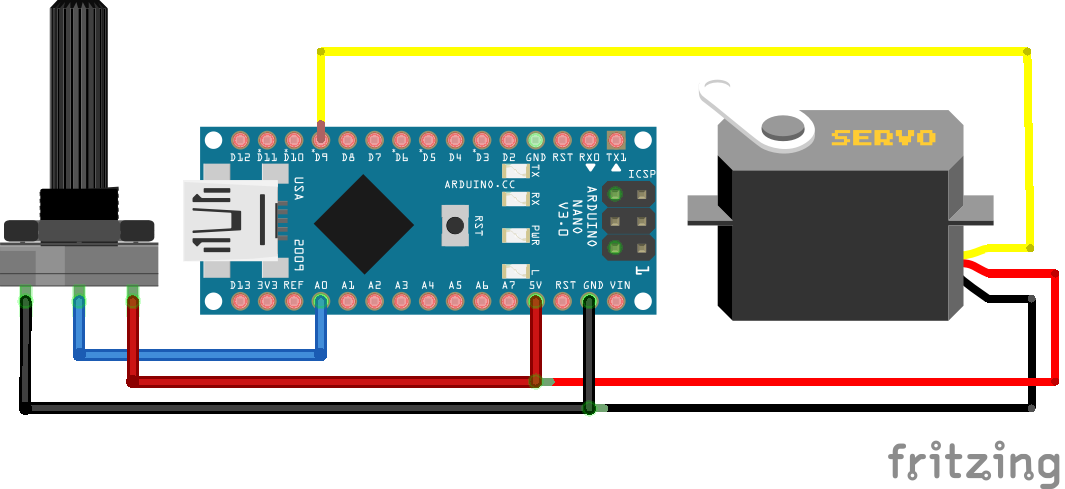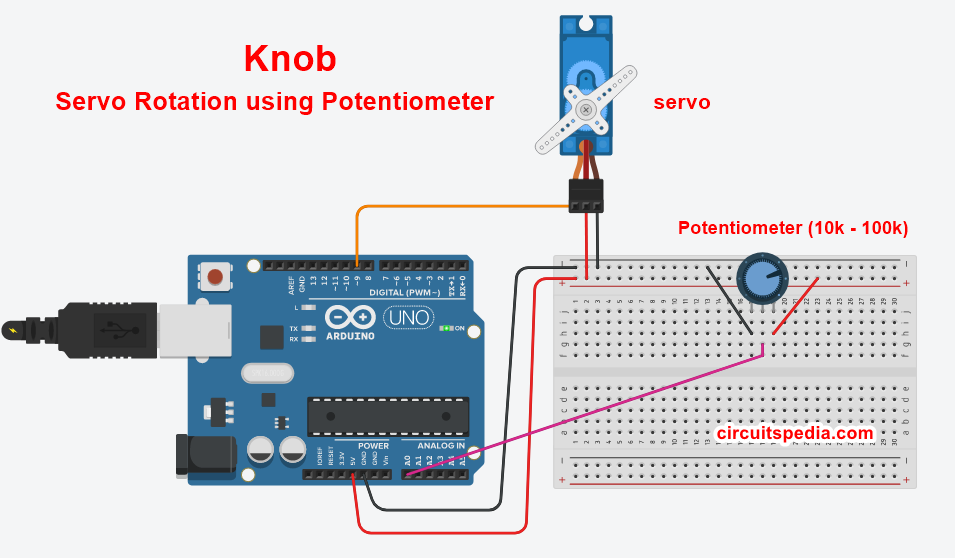

- #Servo motor arduino code to move 90 degree generator#
- #Servo motor arduino code to move 90 degree driver#
- #Servo motor arduino code to move 90 degree series#
- #Servo motor arduino code to move 90 degree free#
What is the difference between a stepper motor and a servo motor? The feedback from the motor is used by the servo motor control loop, which helps the motor to reach the desired velocity and position.

The output shaft of the servo motor can be moved to a specific velocity, position, and angle while regular motors cannot.The difference between regular motor and servo motor are listed below: What is the difference between a regular motor and a servo motor? But, using 12 to 23 motors on the Mega board can disable the PWM functionality on the pin number 11 and 12. It means we can use 12 motors on Arduino Mega. The use of motors on Mega is also limited. On other Arduino boards, the servo library disables the PWM pin 9 and 10 even if the servo is connected to these pins. It is because servos do not interfere with the functionality of PWM pins on the Arduino Mega board. The servo library on Arduino boards can support upto 12 motors, while on Arduino Mega board, it can support upto 48 motors. We can also position shaft at different angles between 0 and 180 degrees. The servo library allows controlling the integrated shaft and gears. What is the Servo library, and why is it used? The Servo library is the library that permits the Arduino to work with servo motors. The movement in a servo motor is determined by an electric signal that can be either digital or analog. The controller is considered as an essential part of the servo motor. The applications of servo motors are machinery, automated manufacturing, robotics, radio controller airplanes, etc. The advantages of a servo motor are listed below: It has closed-loop feedback for controlling the torque and speed.

It means that it has a rotor, stator, and control assemblies. The construction of the servo motor is similar to a DC motor. It means that the duration of pulses applied to the specific control pin controls the angle of rotation of the motor.

PCA9685 outputs = 12-bit = 4096 steps // 2.5% of 20ms = 0.5ms 12.5% of 20ms = 2.5ms // 2.5% of 4096 = 102 steps 12.The principle of the servo motor is based on Pulse Width modulation (PWM).
#Servo motor arduino code to move 90 degree driver#
Servo Motor Control using Arduino and PCA9685 Driver For controlling this servo driver we will use the PCA9685 library which can be downloaded from GitHub. Now let’s take a look at the Arduino code. As an Amazon Associate I earn from qualifying purchases. Amazon / Banggood / AliExpressĭisclosure: These are affiliate links. You can get the components needed for this example from the links below:
#Servo motor arduino code to move 90 degree free#
It has a built in clock so it can drive 16 servos free running, or independently of Arduino. This is a 16-Channel 12-bit PWM and servo driver which communicates with Arduino using the I2C bus. There’s also another way of controlling servos with Arduino, and that’s using the PCA9685 servo driver. Of course, we can set any servo to move to any position, at any time.Īs an example you can also check my Arduino Ant Hexapod Robot project where I used an Arduino MEGA board to control 22 servo motors. So, we just have to create objects from the Servo class for each servo motor, and define to which Arduino pin is connected. Here’s an example code for controlling multiple servos: /*Ĭontrolling multiple servo motors with Arduino On top of that, controlling multiple servo motors with Arduino is as easy as controlling just a single one. The Arduino servo library supports controlling of up to 12 servos at the same time with most the Arduino boards, and 48 servos using the Arduino Mega board. See Also DIY Arduino Robot Arm wiht Smartphone Control Controlling Multiple Servo Motors with Arduino Well that’s because this isn’t the original TowerPro MG996R servo, but a cheaper replica, which obviously has worse performance. The maximum current draw that I noticed was up to 0.63A at stall.
#Servo motor arduino code to move 90 degree series#
I connected a multimeter in series with the servo to check the current draw. Pulses with 0.6ms duration corresponded to 0 degrees position, 1.45ms to 90 degrees and 2.3ms to 180 degrees. A pulse each 20ms digitalWrite(servoPin, HIGH) ĭelayMicroseconds( 1450) // Duration of the pusle in microseconds digitalWrite(servoPin, LOW) ĭelayMicroseconds( 18550) // 20ms - duration of the pusle // Pulses duration: 600 - 0deg 1450 - 90deg 2300 - 180degĪfter some testing I came up with the following values for the duration of the pulses that work with my servo.
#Servo motor arduino code to move 90 degree generator#
Servo Motor Control - 50Hz Pulse Train Generator We just need to define the pin to which the servo is connect, define that pin as an output, and in the loop section generate pulses with the specific duration and frequency as we explained earlier. Now let’s take a look at the Arduino code for controlling the servo motor. See Also Arduino Brushless Motor Control Tutorial | ESC | BLDC Servo Motor Control Arduino Code


 0 kommentar(er)
0 kommentar(er)
